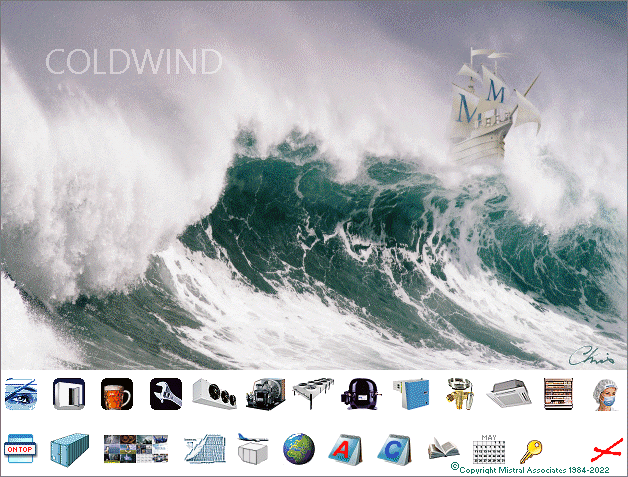 Established in 1984, Mistral is proud to be widely considered the 'generic'
software system provider for the Refrigeration & Air Conditioning industry. In its domestic market, Mistral software is used by more than 85% of refrigeration & air conditioning contracting firms and programs have been distributed to over 25,000 organisations and individuals in over 140 countries.
Established in 1984, Mistral is proud to be widely considered the 'generic'
software system provider for the Refrigeration & Air Conditioning industry. In its domestic market, Mistral software is used by more than 85% of refrigeration & air conditioning contracting firms and programs have been distributed to over 25,000 organisations and individuals in over 140 countries.
Why do Professional Engineers use Joules, Kelvin, Newtons, Rankine and Watts?
It is not a matter of semantics or peevishness. It is a matter of professionalism. Our HVACR industry, world-wide does not depend upon and use as its basic cornerstones the units Joule, Kelvin, Newton, Rankine and Watt just so as to celebrate the names of the two Englishmen, the Irishman and two Scotsmen after whom they were so named. It is because understanding them and how to correctly apply them is fundamental to understanding the science upon which everyone in the HVACR industry depends for their living. It is therefore a duty or an obligation if one is to adopt and be addressed by the privileged title of ‘Engineer’. A duty and an obligation out of respect for our paymasters. That is our customers and our employers.
Apart from anything else understanding and accepting that these are rules as laid down, WITHOUT EXCEPTION, by every leading school, college, university and other teaching establishment responsible for the education of future PROFESSIONALS within our industry, makes life much simpler. Here is an example:-
The difference in temperature between an object at a temperature of minus 40 degrees Fahrenheit (minus 40 degrees Celsius) and one at 32 degrees Fahrenheit (0 degrees Celsius) is 72 degrees Rankine (40 Kelvin). Positive number. It is not 72 degrees Fahrenheit (or 40 degrees Celsius)! Conveniently one simply multiplies Kelvin by 1.8 to obtain Rankine.
If one accepts that Absolute Zero, the condition at which no heat energy is present, is both 0 degrees Rankine and 0 Kelvin (-459.67 Fahrenheit and -273.15 degrees Celsius respectively) then all mathematics for one’s chosen career become that much simpler. Returning figures to degrees Rankine and Kelvin* off screen, and behind the scenes so to speak also makes programming a computer, for thermodynamics for example, that much easier.
* It is now customary to omit the word ‘degree’ in reference to Kelvin.
Simplicity and understanding of the rules results in fewer mistakes and thus happier customers. It also means that amateurish both ‘Rules of Thumb’ and so called ‘Quick Selection Charts’ (usually anything but quick) can be dispensed with.
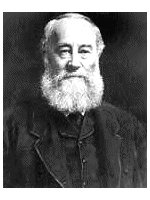
James Prescott Joule. Born Salford, England, 1818. Died Sale, England, 1889.
Joule the SI unit for energy . The joule (J), named in honour of James Prescott Joule and his experiments on the mechanical equivalent of heat. In fundamental terms, 1 Joule is equal to 1 Newton-metre.
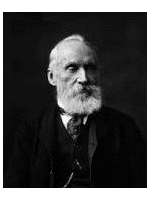
William Thomson Lord Kelvin. Born Belfast, Ireland, 1824. Died Largs, Scotland, 1907.
The Kelvin is a unit of measurement for temperature. One of the seven base units in the International System of Units (SI). The Kelvin is assigned the unit symbol K. The Kelvin scale is an absolute, thermodynamic temperature scale using as its null point Absolute Zero, the temperature at which all thermal motion ceases in the basic description of thermodynamics.
from Kelvin to Kelvin Celsius [°C] = [K] - 273.15 [K] = [°C] + 273.15 Fahrenheit [°F] = [K] X 9/5 - 459.67 [K] = ([°F] + 459.67) × 5/9 Rankine [°R] = [K] X 9/5 [K] = [°R] X 5/9
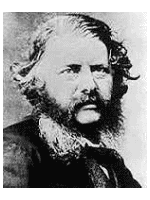
William John Macquorn Rankine. Born Edinburgh, Scotland, 1820. Died Glasgow, Scotland, 1872.
Rankine is a thermodynamic (absolute) temperature scale named after the Glasgow University engineer and physicist William John Macquorn Rankine, who proposed it in 1859.
The symbol for degrees Rankine is °R. Zero Rankine is Absolute Zero. The Rankine degree is defined as equal to one degree Fahrenheit. A temperature of -459.67°F is exactly equal to 0°R.
from Rankine to Rankine Celsius [°C] = ([°R] - 491.67) X 5/9 [°R] = ([°C] + 273.15) X 9/5 Fahrenheit [°F] = [°R] - 459.67 [°R] = [°F] + 459.67 Kelvin [K] = [°R] X 5/9 [°R] = [K] X 9/5
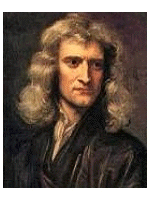
Sir Isaac Newton. Born 1643, Woolsthorpe-by-Colsterworth, England. Died 1727, Kensington, England
The newton (symbol: N) is the International System of Units (SI) derived unit of force. It is named after Sir Isaac Newton following his work on mechanics, specifically Newton's second law of motion.
Newton
Unit system SI derived unit
Unit of Force
Symbol N
In SI base units 1 N = 1 kg·m/s²
Where the following symbols are used: -
N: newton
kg: kilogram
m: metre
s: second
![]() Close and return to previous page
Close and return to previous page
![]()
![]() Newton's Three Laws of Motion
Newton's Three Laws of Motion

French engineer Charles Tellier. Born Amiens, France 1828. Died Paris, France 1913.
In 1876 Tellier purchased a 690 ton ship named Eboe and fitted a Methyl-ether refrigeration plant designed by him. Renamed 'Le Frigorifique' the ship successfully exported frozen mutton from Argentina to France.
'Le Frigorifique' was the world's first successful refrigerated cargo ship. Pioneering Frenchman Charles Tellier is widely celebrated as the creator of the global food 'Cold Chain'.
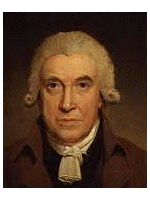
James Watt. Born Greenock, Scotland, 1736. Died Handsworth, England, 1819.
The Watt (symbol:W) is a derived unit of power in the International System of Units (SI), named after the Scottish engineer James Watt. The unit, defined as one Joule per second, measures the rate of energy conversion or transfer.
Watt second is a unit of energy equal to 1 Joule. One Kilowatt hour = 3,600,000 Watt seconds.
Mistral's commitment:
Bringing benefits of computerisation to our RAC industry - without the commonly associated problems.





